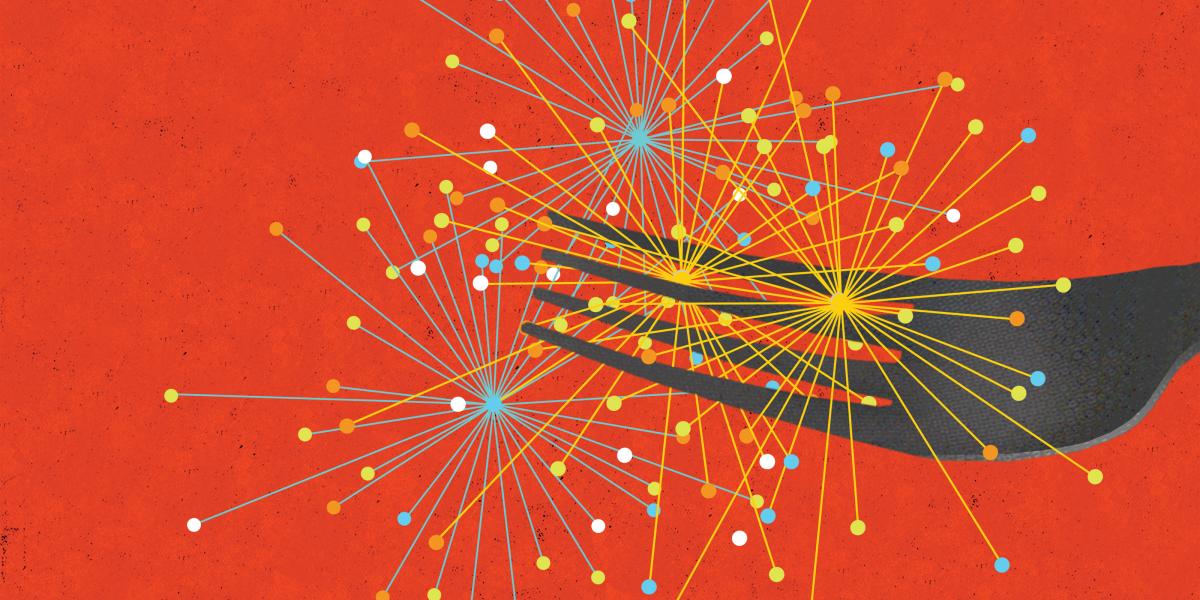'Just Do It' Hasn't Done It
An epidemic of vast proportions calls for a systems science solution.
What’s behind the world’s obesity epidemic? Ask a dozen different people, and you’ll get a glut of explanations.
Some will blame fat genes. Or a lack of resolve. Others will point out that junk food and binge TV are symptomatic of an obesogenic environment, where a Biggest Loser marathon is the endurance sport of choice for the sedentary legions.
Despite many proposed “solutions,” the rate of obesity worldwide since 1980 has nearly doubled. Now, more than 200 million adult men and nearly 300 million adult women are obese, according to WHO. Of even greater concern: Obesity rates among children have also been steadily rising. With more than 200 million school-age children overweight, this generation may be the first to have a shorter lifespan than their parents, the World Obesity Federation warns.
We think we understand why girths are growing globally. It’s a matter of too much vs. too little, right? The bottom line—more calories consumed than expended equals obesity—is accurate, but it oversimplifies the problem. It isn’t going to deliver any lasting solution that works for each person populationwide.
If we know anything for certain, it’s that single, isolated interventions aren’t sustainable fixes. Some—like cutting out carbs one month and eliminating fats the next—not only haven’t worked but have led to unintended consequences, sometimes exacerbating the problem.
The reality is that obesity results from a tangled interplay of policy, economic, environmental, social, behavioral and physiological factors and relationships. The challenge is understanding the system itself, and the systems within each system.
Let me give you an example. Each person is affected by influences and relationships. You have your family, friends, finances, school or work environment, culture, social group, media and entertainment influences—all impacting how and when you eat and exercise. Each of those components of the system then sits within a system. Your school or job is affected by other organizations and businesses, by laws and regulations, by the economy and many social factors. Our world has become so interconnected that a celebrity’s habits in Hollywood can in turn affect what happens in Africa. With so many complicated systems at play, you may try to fix part of the system but unwittingly cause negative consequences.
To address all these systems, we need new approaches and tools. The Global Obesity Prevention Center (GOPC) at Johns Hopkins is convening top minds from disciplines that have not traditionally addressed obesity (such as engineers, computer scientists and mathematicians) with experts who have been involved in obesity for years. The goal: bring new approaches and ideas to the table.
Crucial to our mission will be new computational approaches and tools. Unaided by technology, we find it difficult to comprehend complex systems. Each of us may be able to see one component at a time and predict direct and perhaps secondary effects. But anything beyond that can be hard to hold in one’s head. This is where computer technology can help. Fields such as aerospace, transportation and meteorology routinely use computational simulation models. These models can serve as “virtual laboratories” for forecasting what may happen and for testing changes in a virtual world before implementing in the real world.
Such models are relatively new to public health. But in many ways, public health problems such as obesity are ideal for simulation modeling. Too many factors, relationships and constituents are involved for people to tackle the problem unaided. And the stakes are very, very high. Testing the wrong intervention or policy in the real world can cost time, effort, resources, the well-being of millions–and even millions of lives. Why risk this without using the latest and greatest technology?

Lastly, and importantly, GOPC is bringing a global approach to this global epidemic—essential in our interconnected world. We support wide-ranging efforts, from studying the effects of physical education classes for girls in Saudi Arabia, to community engagement activities in Australia and working with policymakers in Baltimore. Decision-makers can help us understand their needs and constraints, which in turn can guide our research. Educating and training next-gen obesity researchers and decision-makers will help instill new approaches.
The systems approach has transformed other fields in the last century. It revolutionized manufacturing and agriculture production, and connected the world by air travel, for example. It’s time to apply the systems approach to the obesity epidemic.
We can’t afford to continue to do what we have done in the past—approaching obesity on a country-by-country basis, misunderstanding the systems that are leading to obesity and seeking quick fixes.
When we wanted to land a person on the moon or needed to connect the world by communications, we employed a systems approach by convening experts from different disciplines and decision-makers from around the world, understanding the systems related to the challenge and using the latest technology.
Why shouldn’t we do the same for the obesity epidemic?
